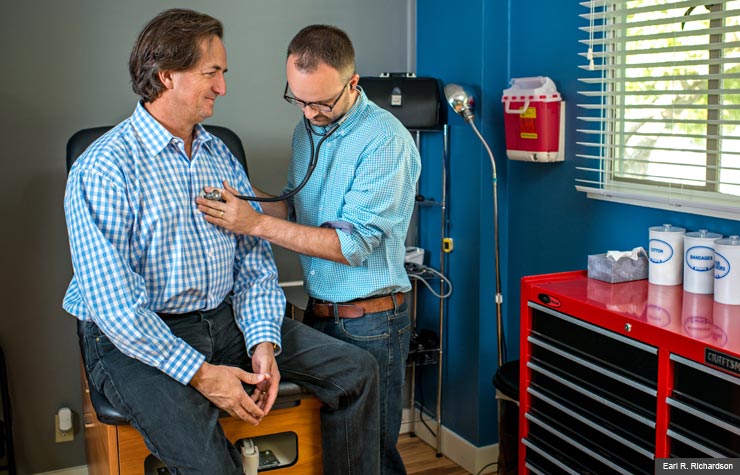AARP Hearing Center


Fed up with waiting weeks for a medical appointment — and then getting only a few precious minutes with your doctor? The unnecessary tests and referrals to a specialist? Insurance hassles, red tape?
So are doctors. And a small but growing number are refusing to accept their patients' medical insurance. Instead, doctors are running their practices on a "membership" model that they claim allows them to spend more time with their patients and to provide better care.
It's called direct primary care, a less expensive offshoot of concierge medicine, which traditionally has been reserved for higher-income patients who pay thousands of dollars per year for longer appointments, better access and more personal care with their doctors. (But in addition to memberships, some concierge practitioners accept insurance; direct primary care doctors don't accept any insurance.)
So, is direct primary care right for you? Here are answers to some questions you may have:
How does direct primary care work?
Patients pay a monthly membership fee — typically $50 to $80. In exchange, they get a more generous allocation of appointments, sometimes for the same day or the day after they called. Appointments usually last longer than the average seven minutes per insurance-based visit. Doctors are often accessible via phone, email or Internet chat and some even make house calls.
At some practices, there are no additional copays. Routine tests and procedures are included. At others (usually charging a lower membership fee), certain services are provided at a significantly discounted rate, or a small fee may be charged if patients request more time with the doctor. Privately insured patients may seek reimbursement for such costs on their own.
Why is this happening?
Physicians and researchers cite three reasons — but all relate to one thing: insurance hassles.

































































More on health
Easy, Enjoyable Ways to Boost Heart Health and Lower Blood Pressure
How just stretching, taking baths or enjoying your coffee could lower your risk of heart attack and stroke